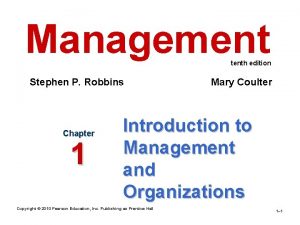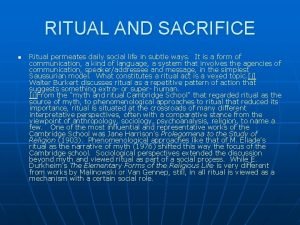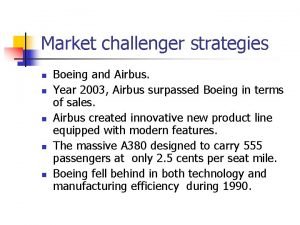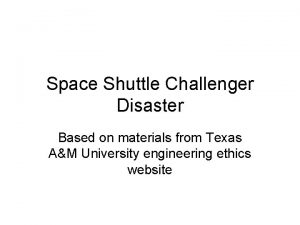Notes on Challenger Disaster Stephen Scott March 12







- Slides: 7

Notes on Challenger Disaster Stephen Scott March 12, 2003

Background • Shuttle propelled by two types of engines: – Two Solid Rocket Boosters (SRBs) generate 3. 3 M lbs. thrust at launch using solid fuel • Used during launch and up to 220000 feet; then detach and parachute to Earth for reuse • Once started, cannot be shut off • SRB failure caused the Challenger explosion – Liquid Fuel Engine (SSME) used to establish and maintain orbit • Most liquid fuel in external fuel tank • This engine had its own problems (see Feynman)

What Went Wrong? • SRB consists of segments that join together • Zinc chromate putty seals hot (5800º F) gases inside • Backed up by two O-rings – Designed to deform as pressure increases to seal openings • About a year before Challenger, Boisjoly discovered that primary O-ring was letting gas escape – Later, the secondary O-ring showed problems as well

What Went Wrong? (cont’d) • O-ring problems exacerbated by cold weather • Boisjoly and other engineers brought this up; were mostly ignored by MTI and NASA management – Launch had already been significantly delayed – Generally, NASA wanted to increase launch rate • Historically problematic due to frequent late payload changes and long astronaut training times – So NASA and MTI management significantly downplayed risk: 1 in 100, 000 vs 1 in 100 • January 28, 1986 was a particularly cold morning at the launch site (18º F). . .

What Happened Next • Investigation by a Presidential Commission – NASA tried to downplay the cold weather problems (blame it on assembly problems) – MTI distorted the facts of the telecon – Boisjoly and Al Mc. Donald greatly suffered at work as a result of their honest testimony that contradicted NASA and MTI • Boisjoly later left MTI – Commission found serious safety flaws in SRB, SSME, and (most importantly) management • MTI and managers went essentially unpunished

Epilogue Engineers have a responsibility that goes far beyond the building of machines and systems. We cannot leave it to the technical illiterates, or even to literate and overloaded technical administrators to decide what is safe and for the public good. We must tell what we know, first through normal administrative channels, but when these fail, through whatever avenues we can find. Many claim that it is disloyal to protest. Sometimes the penalty disapproval, loss of status, even vilification--can be severe. Today we need more critical pronouncements and published declarations by engineers in high professional responsibilities. In some instances, such criticism must be severe if we are properly to serve mankind and preserve our freedom. Hence it is of the utmost importance that we maintain our freedom of communication in the engineering profession and to the public. The decades ahead are bound to be a critical and difficult period and there will be occasions for sharp dissent and strong words if we are to meet our responsibilities. Adolph J. Ackerman, "Engineering Ethics and the Challenger Accident, " 1986

Epilogue (cont’d) For a successful technology, reality must take precedence over public relations, for nature cannot be fooled. Dr. Richard P. Feynman More than 20 years ago I received some superb advice from a QA manager that I have applied throughout my career. He told me to ask myself the following question when faced with a tough question of whether a product was acceptable: "Would you allow your wife or children to use this product without any reservations? " If I could not answer that question with an unqualified, "Yes, " he said, I should not sign off on the product for others to use. That is what ethical analysis of acceptable risk should be. Roger Boisjoly













